Jaw-Dropping Spring Gardens: Secrets to Pairing Bulbs That Every Gardener Must Know

This post follows our research editorial guidelines.

Ah, the magic of spring! When the earth reawakens, and our gardens transform into a kaleidoscope of colors and textures. It’s a season that invites a playful spirit into the world of gardening, especially when it comes to pairing those jubilant spring bulbs with their perfect plant partners. So, grab your gardening gloves, and let’s embark on a delightful journey through “Jaw-Dropping Spring Gardens: Secrets to Pairing Bulbs That Every Gardener Must Know.”
Each duo not only shares the stage in a visual ballet but also thrives together, creating a lush, vibrant garden ecosystem.
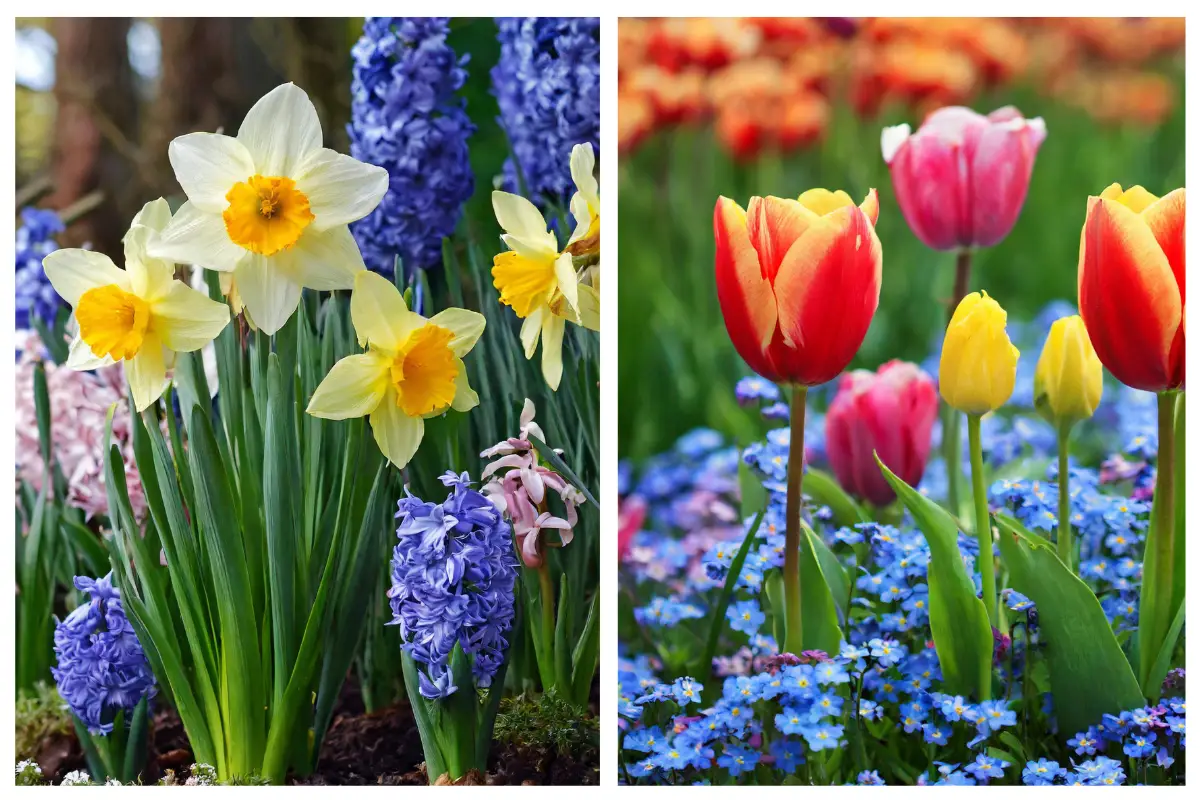
Quickly Find Sping Bulb Companions:
1. Tulips & Forget-me-nots
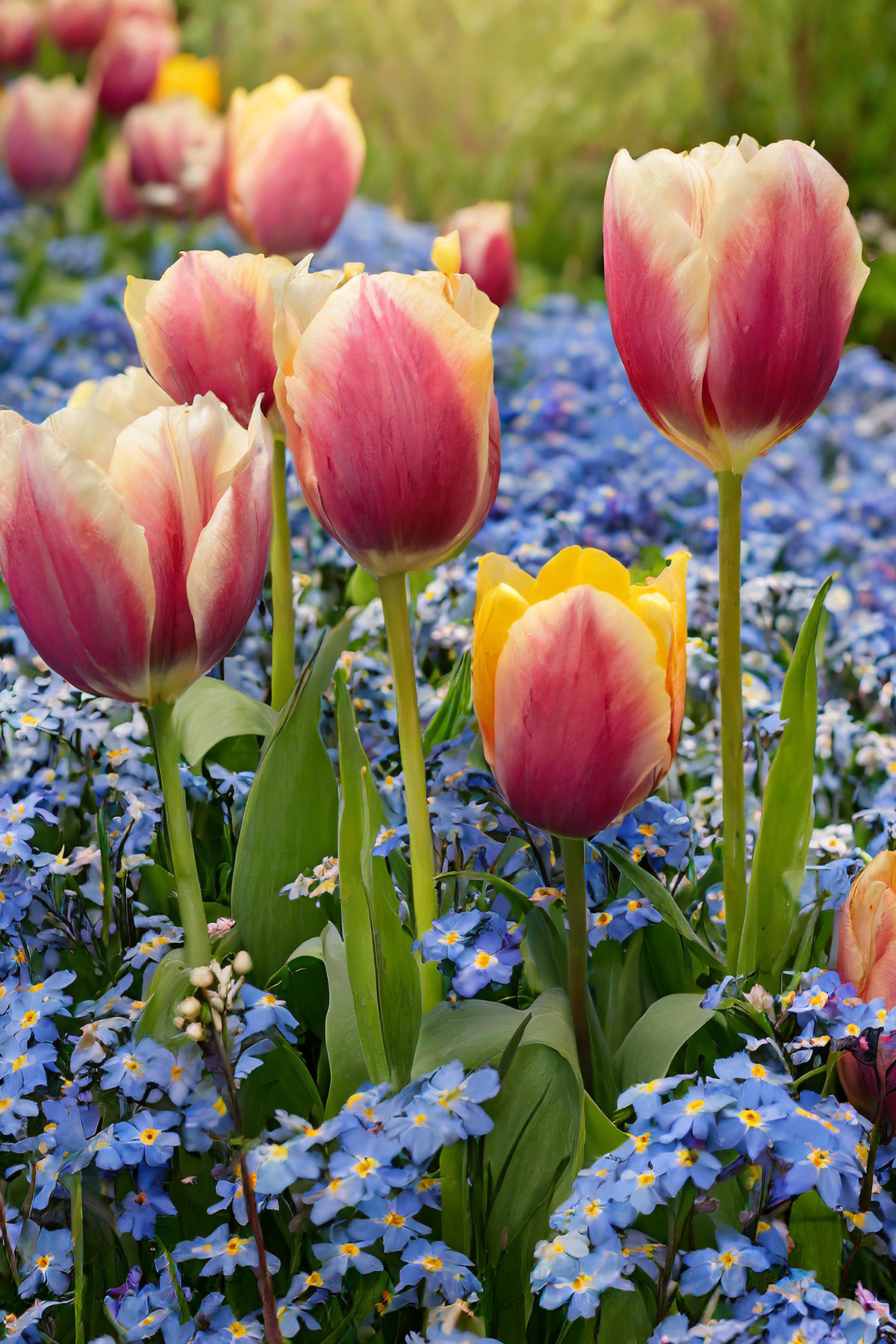
The height difference between the towering tulips and the ground-hugging forget-me-nots creates a layered look that adds depth to your garden. The contrast between the bold tulips and the sea of serene blue forget-me-nots creates a visual impact that’s both dynamic and harmonious.
Tulips and forget-me-nots share a love for well-drained soil and full to partial sun, making them garden soulmates. While tulips root deep into the soil, forget-me-nots happily spread on the surface, creating a living mulch that retains moisture and suppresses weeds.
2. Daffodils & Hostas
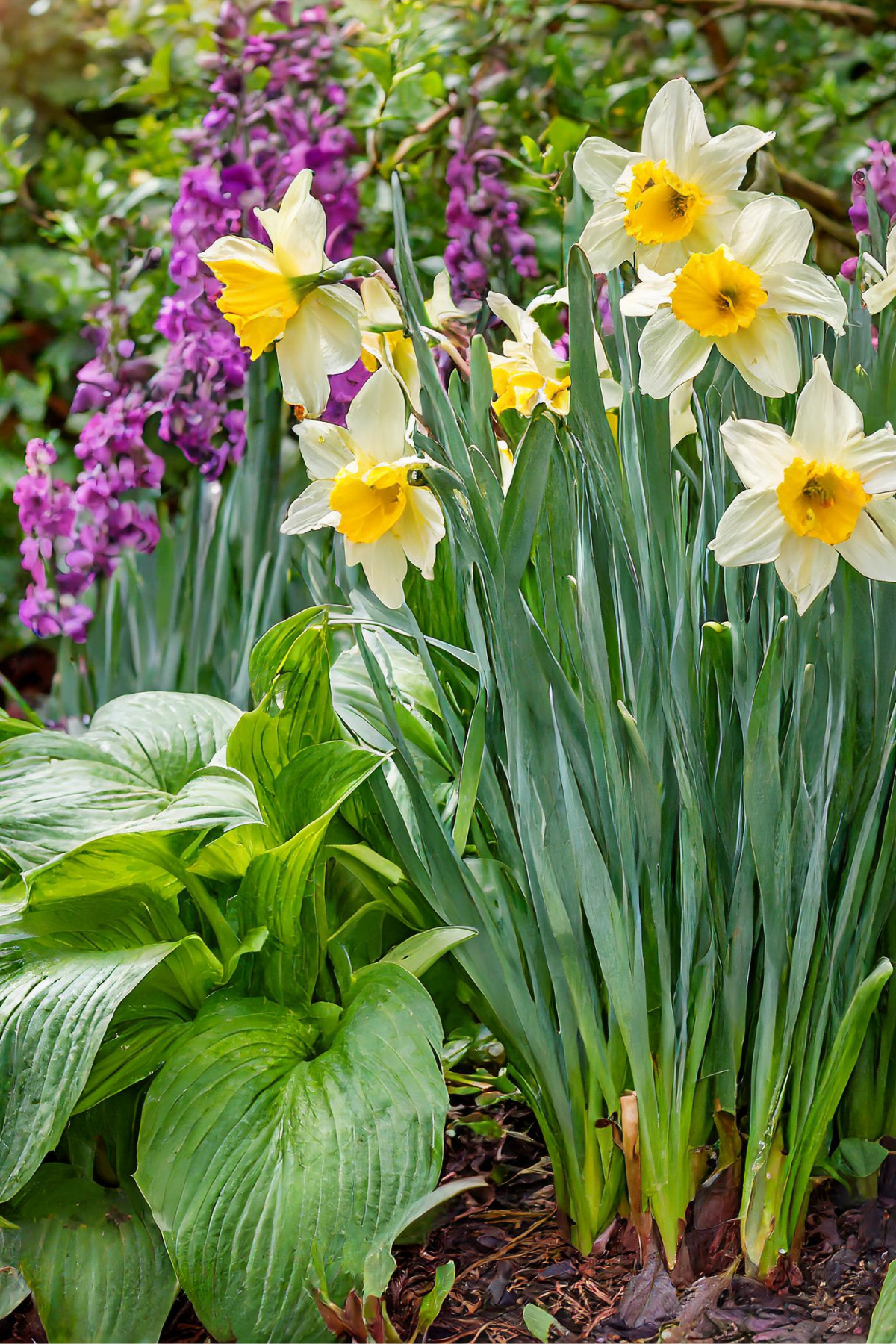
The broad, lush leaves of hostas provide a perfect green backdrop to the bright yellow and white daffodils. This pairing not only hides the daffodil’s dying foliage but also introduces a play of textures and forms, adding a rich, layered effect to the garden.
Both daffodils and hostas thrive in well-drained soil with moderate moisture. They prefer similar light conditions, from full sun to partial shade, allowing them to coexist perfectly. Hostas’ later emergence fills the gap left by fading daffodils, making the transition seamless.
3. Hyacinths & Bleeding Hearts
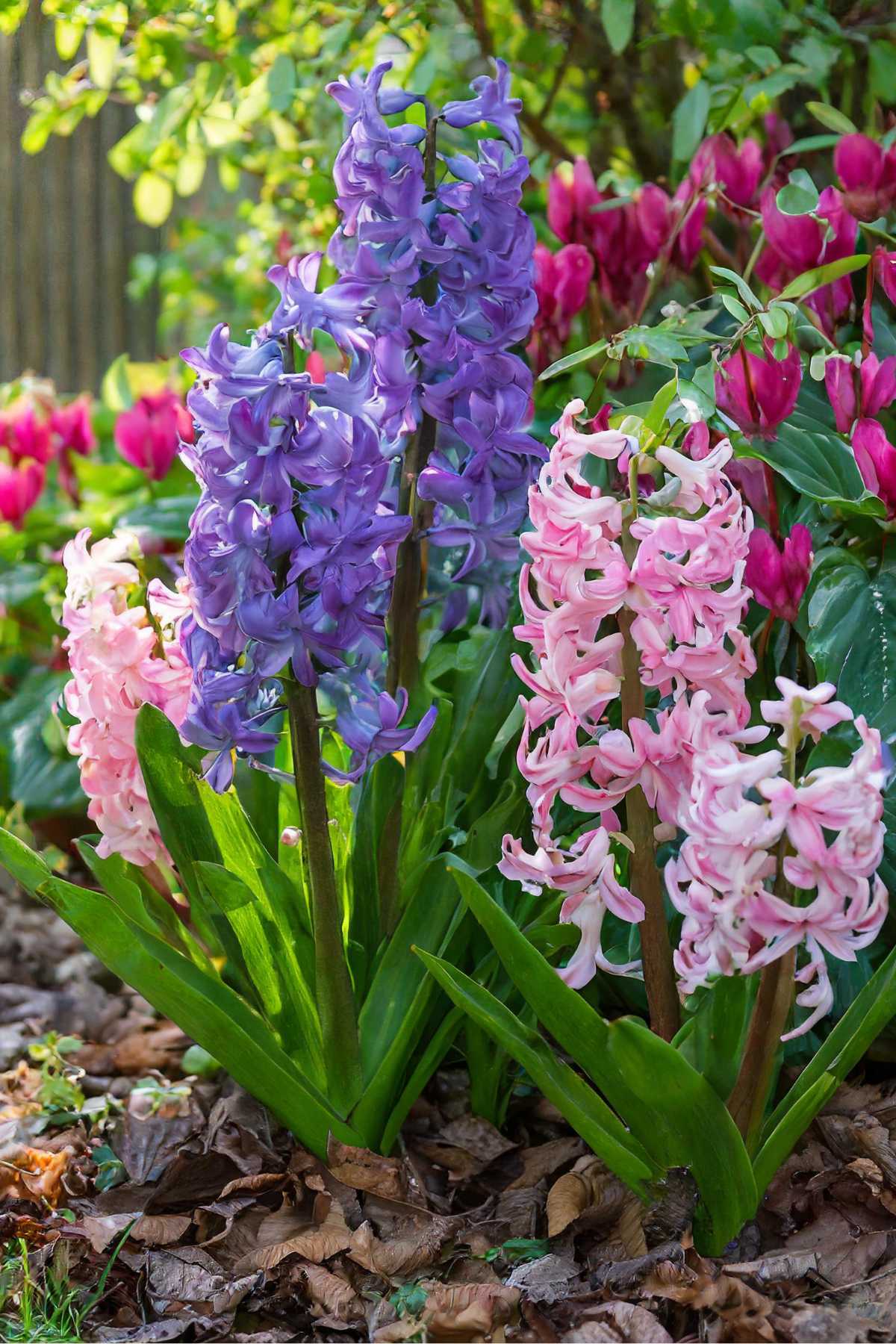
In shaded areas of my garden, I pair Hyacinths and bleeding hearts. The robust, upright spikes of hyacinths contrast beautifully with the delicate, arching stems of bleeding hearts, creating a striking visual dance. The color contrast is equally appealing, with the deep pinks and whites of bleeding hearts standing out against the rich purples and blues of hyacinths.
Hyacinths and bleeding hearts both appreciate well-drained, fertile soil and do well in partial shade, where the light is dappled. This makes them ideal partners in slightly shaded gardens or under the canopy of deciduous trees.
4. Crocuses & Creeping Thyme
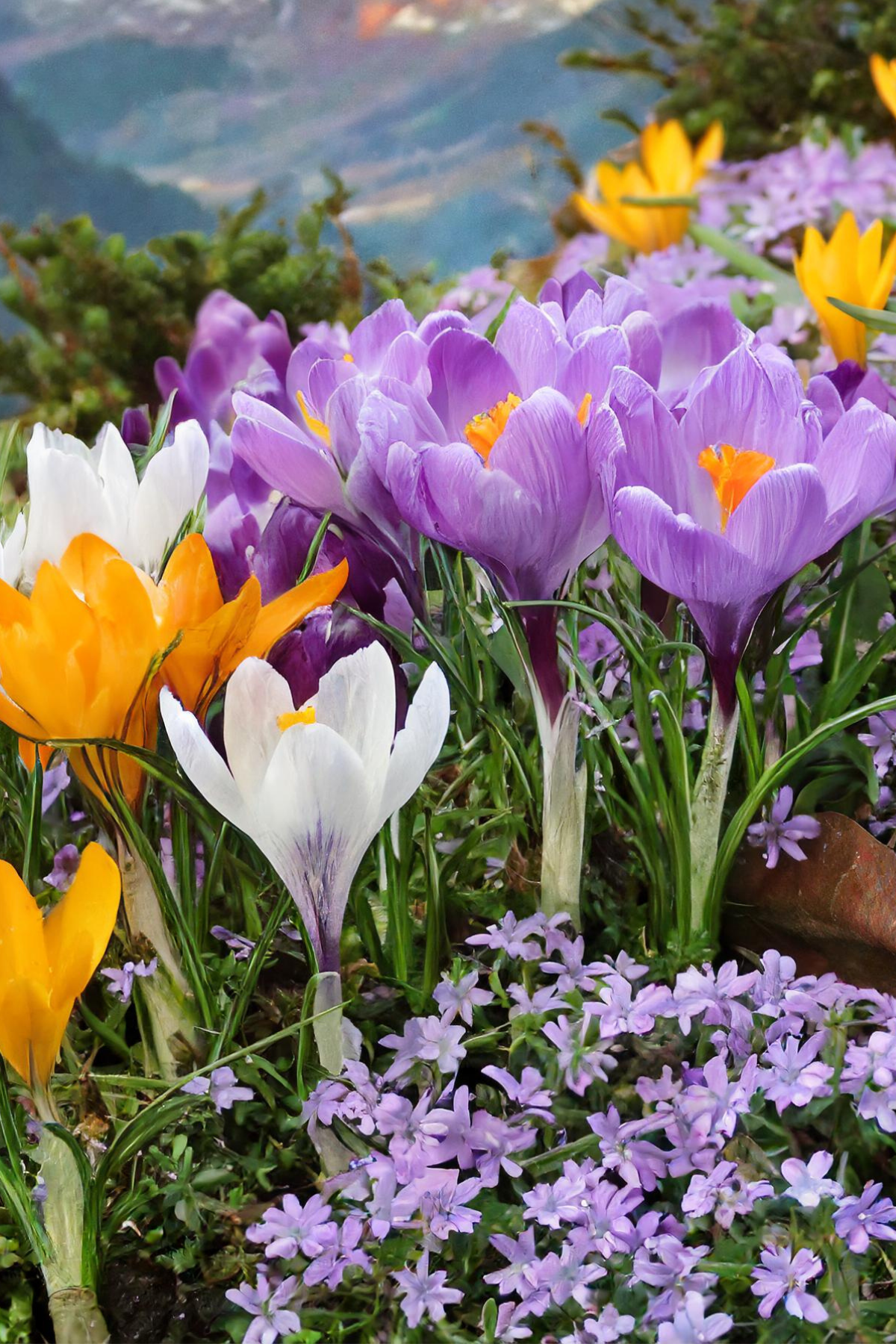
The interplay of textures and heights is visually captivating, with the fine, mat-like foliage of creeping thyme accentuating the delicate, cup-shaped crocuses. The contrast in colors, with the green of the thyme and the varied hues of crocuses, adds vibrancy to early spring gardens.
Creeping thyme and crocuses are sun lovers and share a preference for well-drained soil. Creeping thyme, with its drought tolerance, creates a perfect living carpet that doesn’t compete with crocuses for moisture, encouraging healthy growth.
5. Alliums & Ornamental Grasses
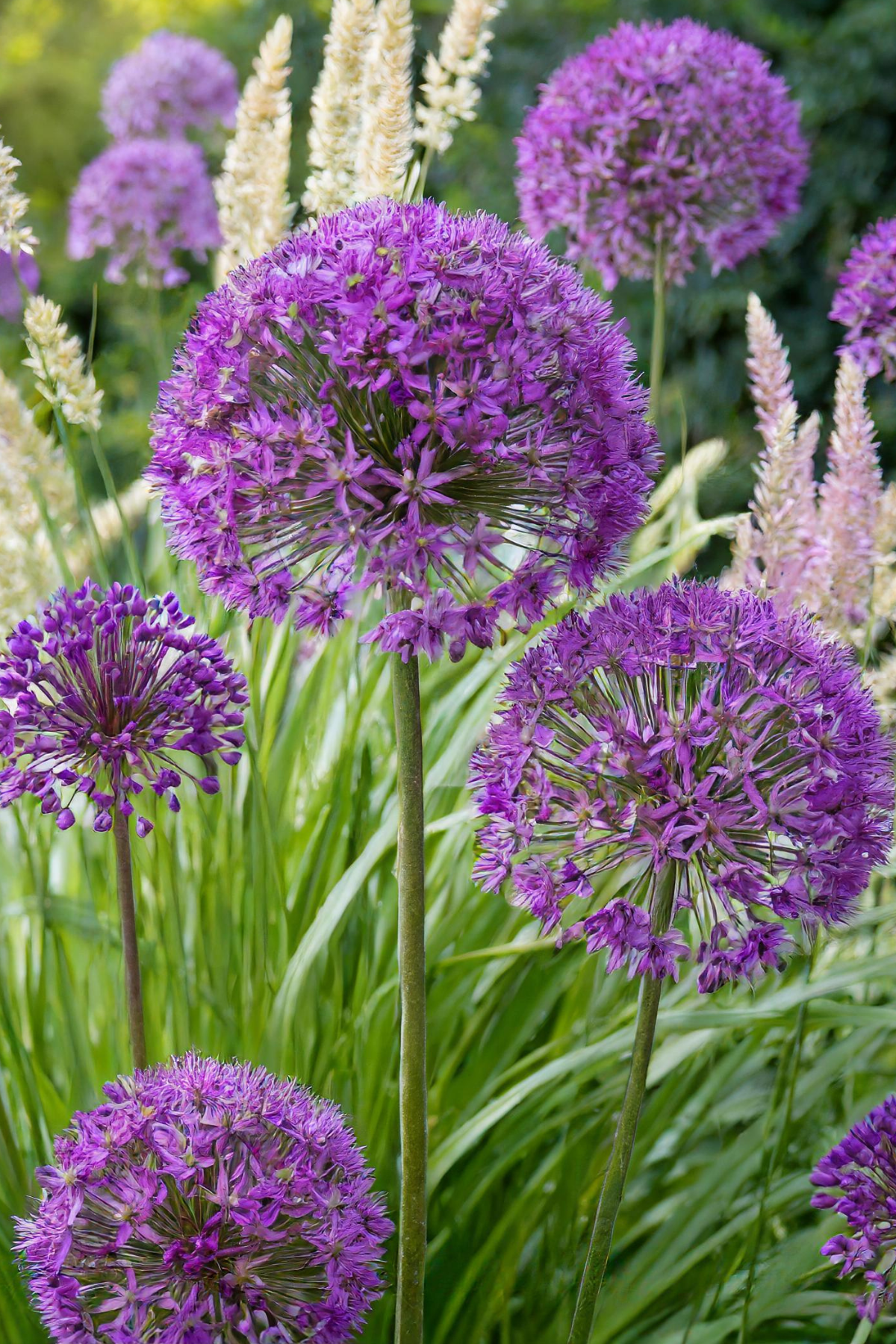
The tall, spherical blooms of alliums floating above the waving sea of ornamental grasses create an ethereal effect. The movement of the grasses in the breeze adds dynamism to the garden, while the contrasting forms emphasize the architectural beauty of alliums. The sight of tall, spherical allium blooms floating above a sea of waving ornamental grasses is truly an ethereal sight to see.
6. Snowdrops & Hellebores (Lenten Roses)

One of the most resilient duos in my garden are the snowdrops and hellebores, both flourishing in the cool, partial shade of early spring. The combination of snowdrops and hellebores introduces a rich tapestry of textures and colors at a time when the garden is just waking up. Their simultaneous blooming creates a layered effect of delicate snowdrop bells against the more substantial, colorful petals of hellebores, offering a beacon of life in the late winter landscape. I love how the delicate snowdrop bells and the more substantial, colorful petals of hellebores create a layered effect that’s a beacon of life in the late winter landscape.
7. Muscari (Grape Hyacinths) & Spring Phlox
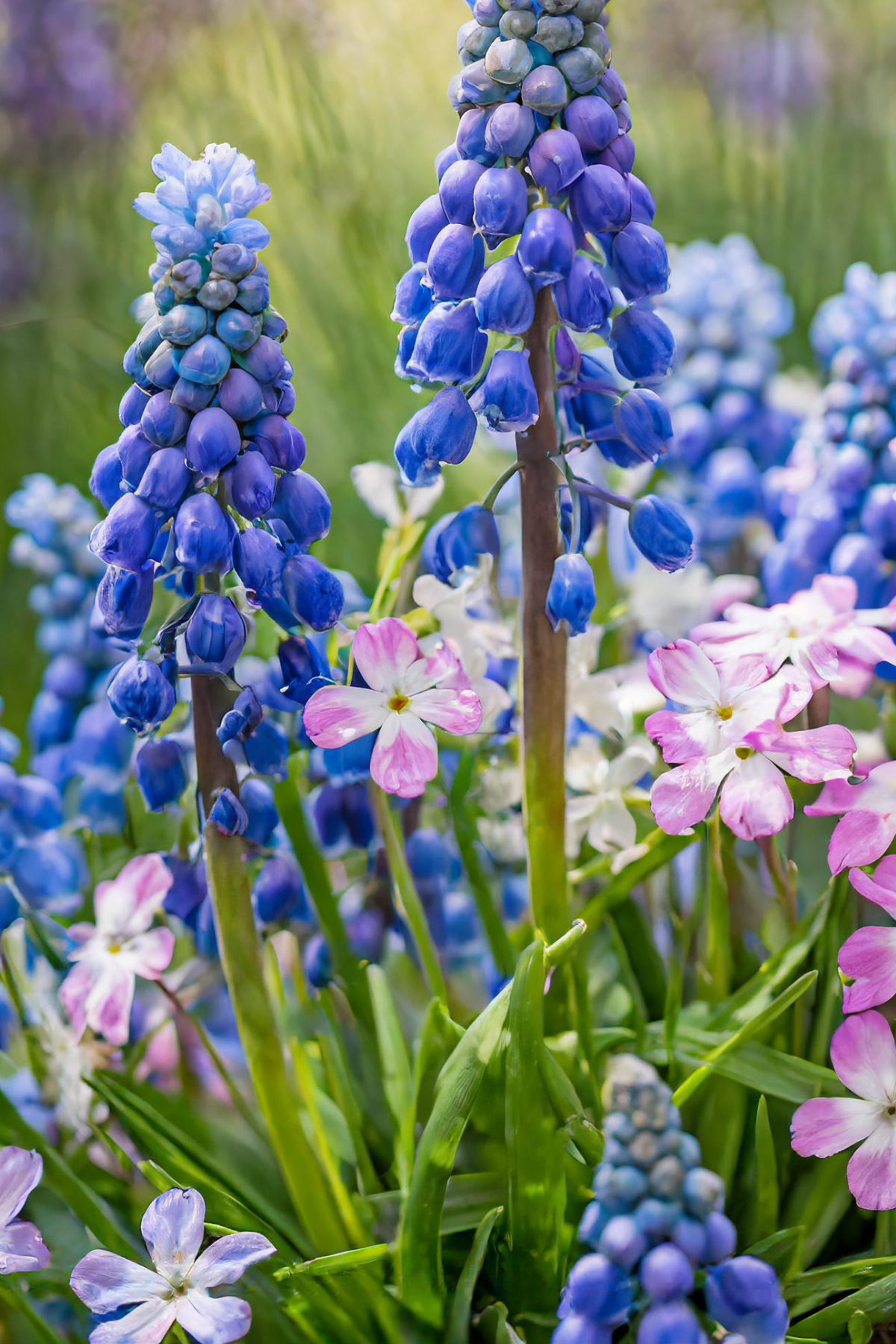
The vertical, grape-like clusters of muscari rise above the spreading mat of spring phlox, creating a contrast in form and texture. The vibrant blues of muscari against the soft pastels of phlox paint a picturesque scene, enriching the garden with layers of color and texture.
Muscari and spring phlox both enjoy sunny spots and can tolerate partial shade. They prefer well-drained soil but are quite versatile, adapting to various soil types. This flexibility makes them easy companions in many garden settings.
Final Thoughts
Each of these pairings is a testament to the beauty and diversity of nature, showcasing how different plants can come together to create a garden that is not only visually stunning but also ecologically harmonious. By considering these companion relationships, you can design a spring garden that is a feast for the eyes, a haven for wildlife, and a source of joy throughout the season.

Before you go!
11 Weeds With White Flowers + Pictures and Growing Guides (Common Weeds with White Flowers)
11 Low Maintenance Flowering Bushes for the Front of Your House
11 Flowering Plants for a Small Beautiful Balcony
12 Tall Perennials With The Best Pink Flowers in Bloom